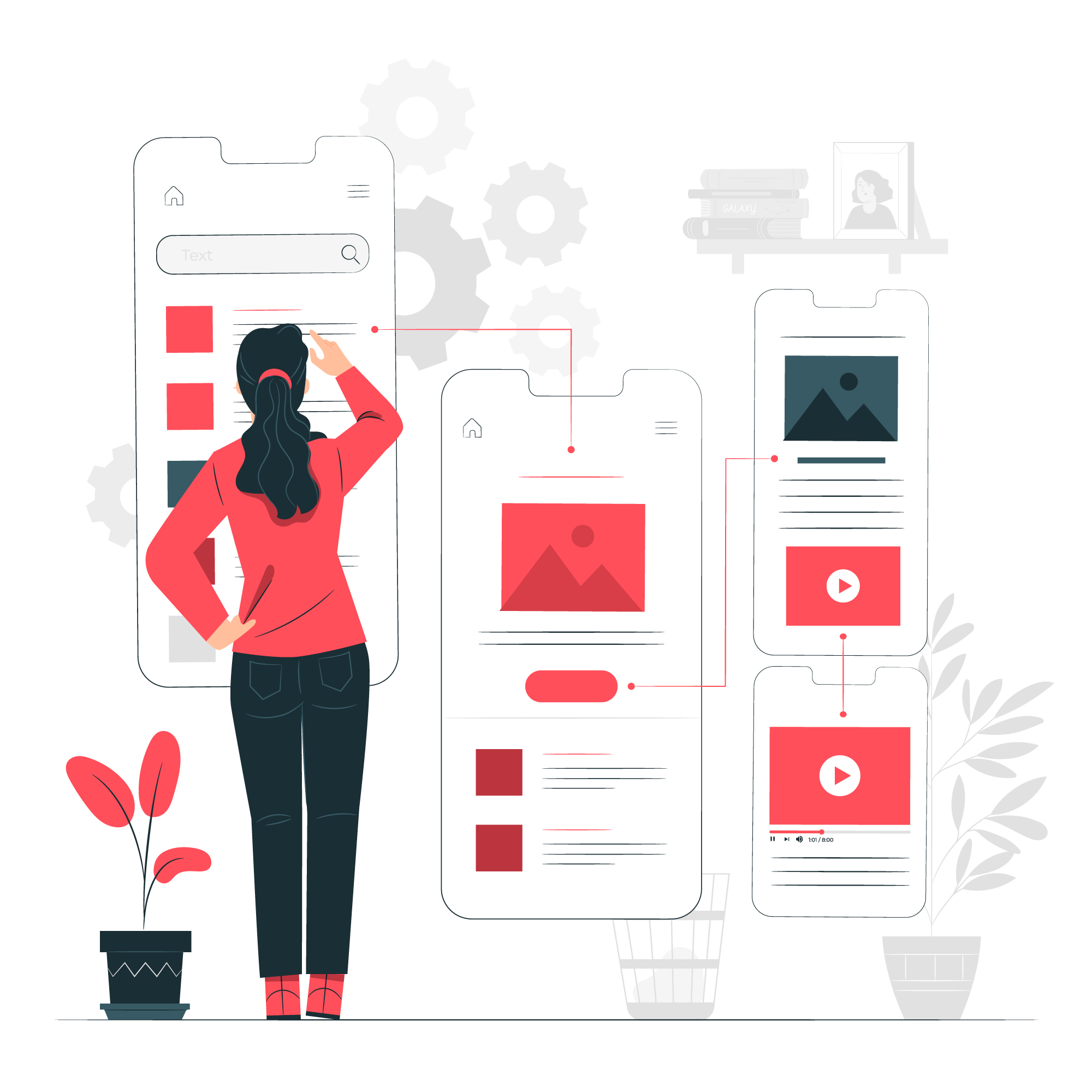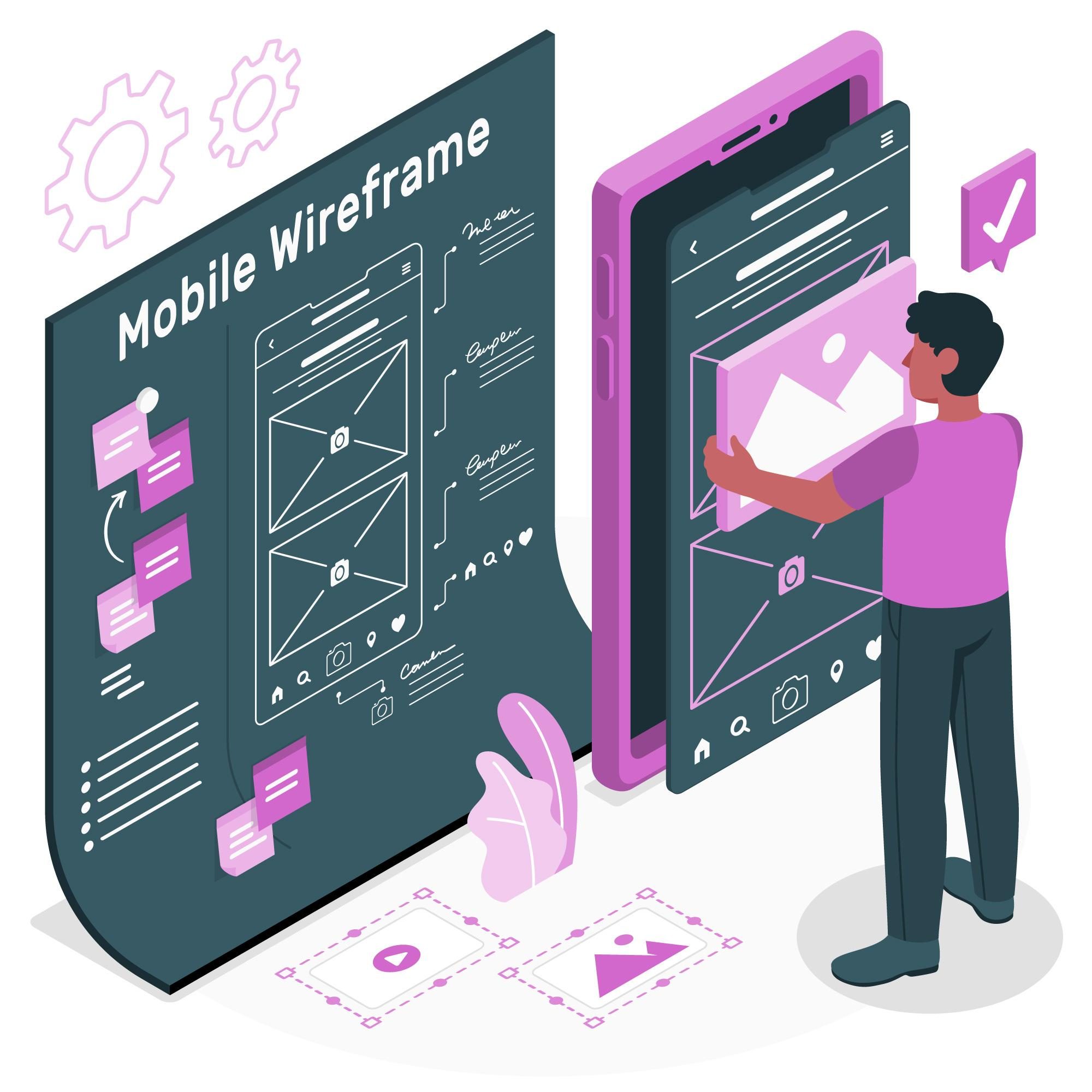The world has changed. The rise and impact of technology has made our society more digitized with a priority on user experience. With over 1.74 billion websites and over 4 billion mobile apps, having a good online presence and digital interfaces is essential for today’s businesses and organizations to survive and thrive. Because of this,UI and UX designers are more in demand and essential than ever.
If you’re curious about what a career in UI or UX is like, we have all the answers here. In this blog, we’ll go over everything you may be wondering about, which include:
- Why choose a career in UI/UX design
- What skills are necessary for a UI/UX career
- Frequently asked questions
So let’s get into it!
Why should you choose a career in UI/UX design?
Both UI and UX design are stable, lucrative industries to go into. As more things in our daily lives become digitized, this creates more of a demand to ensure these elements are user focused and user friendly. But this UI and UX isn’t just for websites or mobile apps, it extends to anything that is user facing so elements like tax or interactive software, vehicle computer systems, clocks, voice technology, and much more!
According to Glassdoor, User Interface (UI) designers can earn anywhere from $52,000 to $105,000. On average a UI designer makes about $74,000. For User Experience (UX) designers, they can earn anywhere from $55,000 to $118,000. On average, UX designers can make approximately $88,000.
In a recent report by the UX Design Institute, industry leaders are forecasting an increased demand for UX and digital skills as companies and organizations expand their online presence and capabilities. Furthermore, UX and UI designers are one of the top five professions in demand and this trend is expected to be in high demand through 2024.
If you’re a little fuzzy on what the difference between UX and UI design is, check out our blog on UX and UI designers here.

What type of skills do you need to go into UI/UX design
For both UI and UX, although these are different fields, there are some mutual skills and traits that are desirable in both fields. Needless to say, this isn’t an exhaustive list that covers everything you need but we’ve compiled the top three hard, technical skills that help make a standout designer. To get a more comprehensive and in-depth understanding of both technical and interpersonal skills every designer should have, check out our UI/UX skill blog here!
The industry, company, or niche you choose to go into will be the defining factor on whether you have to expand or narrow your skillset, but the list below is a good starting point.
Top three hard skills include:
- User research
One of the most vital skills of a good UX/UI designer is having solid user research skills. User research can be conducted and collected by a variety of means, depending on the kind of data you are looking to gather (either qualitative or quantitative data) this can mean conducting user interviews, user observation, surveys, focus groups, and more.
User research helps create the foundation for creating a product or service that has superior user experience. From the research that is collected, it’s just as important that UI and UX designers can interpret and analyze it. There would be no point in gathering all this data if it can’t be used to create informed decisions.
- Wireframing and Prototyping
Wireframes are the first iteration of how a page will be structured and which interface elements will be included and where. You can think of them as the blueprint for a digital product or website. Wireframes have a blend of both UI and UX elements, the overall goal of wireframes is to build the simplest but most effective user experience, but in order to do so UI/UX designers must know how all the UI elements (such as images, menus, CTA buttons, etc.) can be indicated in diagrammatic form.
The next step after a wireframe is approved is creating prototypes. Prototypes are more advanced than wireframes and more comprehensive as well. You can think of them like a 3D scale model of the final product. Prototypes give valuable insight into a designs approach and show more of how the final product will function and meet the user needs.
- Information Architecture
Since UI/UX designers’ goal ultimately is to educate and address the users’ concerns about a particular product, this often will involve coming up with content strategies. Information Architecture (IA) is defined as the science of organizing and structuring content for digital products. This IA skill is essential in creating all sorts of digital products, even more so if the content is complex.

Frequently asked questions about UI/UX careers
Do I have to know how to do coding as a UI/UX designer?
Not necessarily, but it does help you significantly if you know a few things about coding. Now granted, coding can refer to a wide range of elements, but having a good understanding
of HTML, CSS, and Javascript (which are the building blocks of most coding) will allow you to communicate more effectively with other team members since coding lets you have a deeper insight of capabilities and possibilities. By incorporating or having some coding knowledge in your repertoire can help expand your job opportunities but also allow you to have more thoughtful and insightful designs.
Are UX/UI designers the same thing as web developers?
No, these disciplines are very different. UI and UX are more focused on user facing elements. Whether it be creating wireframes that give users the easiest and most seamless experience or creating and tailoring interface elements to ensure navigation and functionality. UI and UX focus on the user.
While on the other hand, web developers focus is more technical in its nature. Web developers use coding language to plan and implement the structure necessary to create a navigable, functioning website. Often these roles are confused with each other since there is plenty of collaboration between UI/UX designers and web developers.
To learn more about web development and design, check out our blog here!
Is UI/UX only for websites?
Not at all! UI and UX can be used in a multitude of disciplines, but depending on if you choose to focus on UI or UX you can expect to venture into jobs such as:
- UI/UX Designer
- UX Researcher
- Product Designer
- Information Architect
- UI/UX Developer
- Usability Analyst
- UX Writer
Feeling more confident about beginning your UI/UX design career?
The next step would be to find an institution that offers a great UI/UX program, lucky for you ABM College’s UI/UX design diploma program is a great first step in the right direction. Since ABM offers both UI and UX training, you are able to take advantage of having a dual skillset. Contact us today for more information.
Read more industry-related blogs here.
Images sourced from Freepik.
About The Author

Private Career College
ABM College is a leader in career-focused education, committed to empowering students with industry-relevant skills. With expert instructors and practical training, ABM College delivers high-quality programs in health, business, technology, and more, ensuring graduates are prepared to meet workforce demands. Known for its supportive learning environment and a focus on real-world application, ABM College is a trusted educational partner helping students achieve professional success across Canada.
